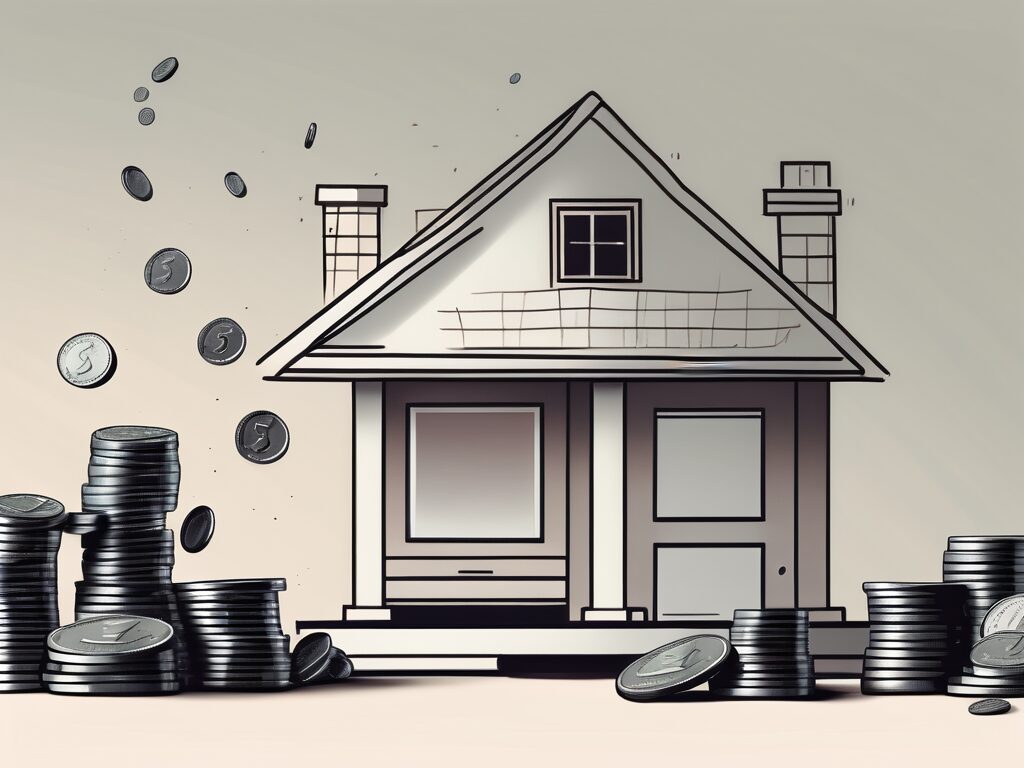
Agent A-Team or Solo Superhero? Finding the Right Real Estate Partner for Your Selling Journey in Wildwood Florida
When it comes to selling your home in Wildwood, Florida,…
January 29, 2024
Refinancing your mortgage can be a smart financial move if done correctly. One key factor to consider when deciding whether to refinance is the break-even point. Understanding and calculating the break-even point is essential to make an informed decision about refinancing. In this comprehensive guide, we will walk you through the process of calculating and mastering the break-even point in refinancing.
Before we delve into the details of calculating the break-even point, it is crucial to understand why it is so important in the refinancing process. The break-even point represents the point in time where the savings from refinancing outweigh the costs associated with it. By determining this point, you can evaluate whether it’s worth refinancing your mortgage or not.
When considering refinancing, it’s essential to have a clear understanding of the break-even point. This point acts as a financial compass, guiding you towards an informed decision about refinancing. It allows you to consider how long it will take to recoup the costs associated with refinancing through the monthly savings on your mortgage payments. Without this knowledge, you might be blindly entering into a refinancing deal that may not be favorable in the long run.
By aiming to achieve a break-even point within a reasonable timeframe, you ensure that refinancing is a financially sound option for you. It helps you avoid potential pitfalls and unexpected costs involved in the refinancing process. Understanding the importance of the break-even point empowers you to make a well-informed decision that aligns with your financial goals.
The break-even point acts as a financial compass, guiding you towards an informed decision about refinancing. It allows you to consider how long it will take to recoup the costs associated with refinancing through the monthly savings on your mortgage payments. Without this knowledge, you might be blindly entering into a refinancing deal that may not be favorable in the long run.
When refinancing, it’s crucial to have a clear understanding of the break-even point. This point represents the moment when the accumulated savings from refinancing surpass the costs involved. By calculating the break-even point, you can determine whether the benefits of refinancing outweigh the expenses.
By aiming to achieve a break-even point within a reasonable timeframe, you ensure that refinancing is a financially sound option for you. It helps you avoid potential pitfalls and unexpected costs involved in the refinancing process. Understanding the importance of the break-even point empowers you to make a well-informed decision that aligns with your financial goals.
Calculating the break-even point in refinancing can seem intimidating, but luckily, there are powerful tools to assist you. Break-even calculators are readily available online and can simplify the process for you. By inputting specific details about your current mortgage, proposed refinancing terms, and associated costs, these calculators provide you with an estimated break-even point.
Break-even calculators are designed to streamline the process of determining the break-even point. They take into account various factors such as your current interest rate, the new interest rate, closing costs, and the length of your mortgage. By inputting these details, you can obtain an estimate of the time it will take to recoup the costs of refinancing.
However, it’s important to be aware of the limitations of these calculators. They rely on assumptions and estimates, which might not always accurately reflect your unique situation. Therefore, it’s crucial to use them as a starting point and complement them with a thorough analysis of your own financial situation.
While break-even calculators can provide valuable insights, it’s essential to consider other factors as well. Your personal financial goals, the current state of the housing market, and potential changes in your income should also be taken into account. By conducting a comprehensive analysis, you can make a well-informed decision about refinancing that aligns with your long-term financial objectives.
The refinance break-even rule is a valuable guideline to determine whether you should proceed with refinancing. This rule suggests that you should only consider refinancing if you can recover your closing costs within a specific timeframe. While there is no fixed standard, a commonly used timeframe is within three to five years.
However, it’s essential to note that the duration for recovering your costs should align with your long-term plans. If you plan to sell your property or move within a few years, it might be wiser to reconsider refinancing.
When considering the refinance break-even rule, it’s crucial to understand the various factors that contribute to the calculation of closing costs. These costs typically include appraisal fees, loan origination fees, title search fees, and attorney fees, among others. By evaluating these costs and comparing them to the potential savings from refinancing, you can determine if it’s financially beneficial to proceed.
Another factor to consider when applying the refinance break-even rule is the current interest rates. If the interest rates have significantly dropped since you obtained your original mortgage, refinancing may offer substantial savings. However, if the rates have not changed significantly or have increased, it may not be advantageous to refinance.
Furthermore, it’s important to consider the impact of refinancing on your credit score. When you refinance, a new loan is created, and your old mortgage is paid off. This process can temporarily lower your credit score due to the new credit inquiry and the closing of the old account. However, if you make timely payments on your new loan, your credit score can gradually improve over time.
Additionally, it’s worth noting that the refinance break-even rule is not the only factor to consider when deciding whether to refinance. Other considerations include your current financial situation, your long-term goals, and the overall health of the housing market. Consulting with a mortgage professional can provide valuable insights and help you make an informed decision.
In conclusion, the refinance break-even rule serves as a useful guideline to determine the financial viability of refinancing. By evaluating the timeframe to recover closing costs, considering the current interest rates, and understanding the impact on your credit score, you can make an informed decision. However, it’s important to remember that this rule should be considered alongside other factors to ensure that refinancing aligns with your long-term goals and financial situation.
Refinancing your mortgage can be a smart financial move, but it’s important to consider the break-even point before making a decision. The break-even point is the point at which the cost of refinancing is recouped through savings on your monthly mortgage payments. In this article, we will explore common questions about the break-even point in refinancing and provide you with valuable insights to help you make an informed decision.
A cash-out refinance allows you to tap into your home equity by refinancing for an amount greater than your current mortgage balance. When calculating the break-even point for a cash-out refinance, consider the additional costs associated with the increased loan amount.
These additional costs may include closing costs, origination fees, and potentially higher interest rates. It’s important to factor in these expenses when determining the break-even point. By doing so, you can accurately assess whether the potential savings resulting from the cash-out refinance outweigh the upfront costs.
Furthermore, it’s crucial to evaluate your long-term financial goals and how a cash-out refinance aligns with them. Are you planning to use the funds for home improvements, debt consolidation, or other investments? Understanding the purpose behind the cash-out refinance will help you determine if it’s financially prudent to proceed.
Refinancing to a shorter-term loan can offer significant long-term savings if the break-even point is reached within a reasonable timeframe. However, it’s important to consider the potential increase in monthly payments associated with shorter-term loans.
When assessing the break-even point for this type of refinancing, calculate the monthly savings resulting from a lower interest rate and compare it with the increased monthly payments. This analysis will provide insight into whether the trade-off is worth it in the long run.
Additionally, consider your financial stability and future plans. Are you expecting any major life changes, such as retirement or starting a family? These factors can influence your decision to refinance to a shorter-term loan. It’s essential to strike a balance between saving money and maintaining financial flexibility.
Mortgage points are an upfront payment made to lower the interest rate on your mortgage. When considering mortgage points in refinancing, it is crucial to calculate the break-even point.
Typically, mortgage points are viewed as advantageous if you plan to stay in your home for an extended period. By comparing the upfront costs of the points with the monthly savings on your mortgage payments, you can determine whether mortgage points are worth it in your refinancing strategy.
It’s important to note that mortgage points may not be suitable for everyone. If you anticipate selling your home in the near future or are uncertain about your long-term plans, the break-even point for mortgage points may not be reached within a reasonable timeframe. Consider consulting with a mortgage professional to assess your specific situation and determine the best course of action.
Mastering the break-even point in refinancing is a vital step in making informed financial decisions. By understanding its significance, utilizing break-even calculators, and considering various scenarios, you can confidently calculate your break-even point and decide if refinancing is the right path for you.
Remember, every financial situation is unique, so it’s essential to consult with professionals and conduct a thorough analysis before making any decisions. Armed with knowledge and careful planning, you can navigate the refinancing process with confidence and make choices that align with your financial goals.
Whether you’re looking to lower your monthly mortgage payments, access your home equity, or take advantage of lower interest rates, understanding the break-even point will empower you to make a well-informed decision about refinancing your mortgage.
Ready to take the next step in your refinancing journey? Richr is here to support you. As a leading property listing platform specializing in For Sale By Owner (FSBO), Richr offers invaluable resources to help you make informed decisions. Take advantage of our free home valuation service to understand your property’s worth in today’s market. For a personalized Comparative Market Analysis (CMA) that can guide your refinancing strategy, don’t hesitate to call Richr on 844-957-4247. Our experts are ready to assist you in maximizing your home’s potential.

If you want the Richr team to help you save thousands on your home just book a call.
 Book a call
Book a call